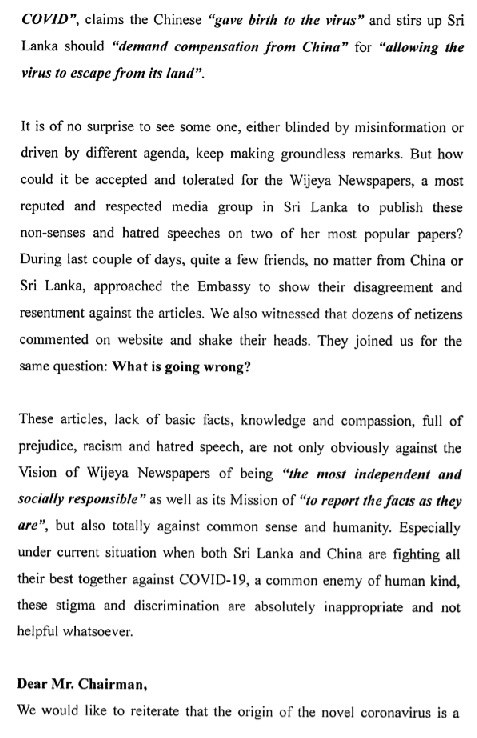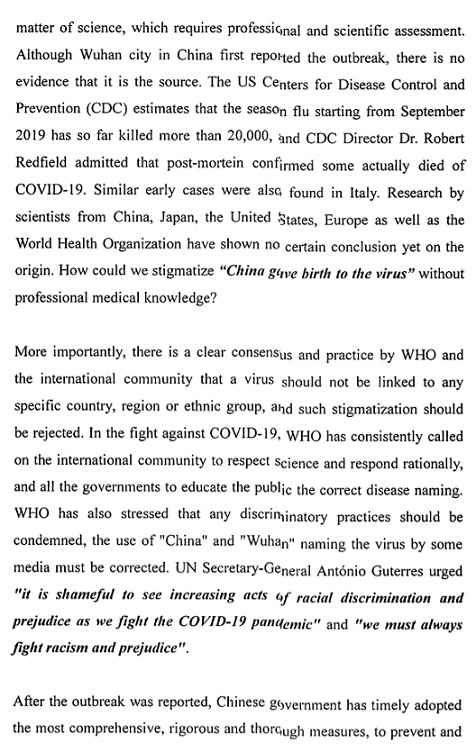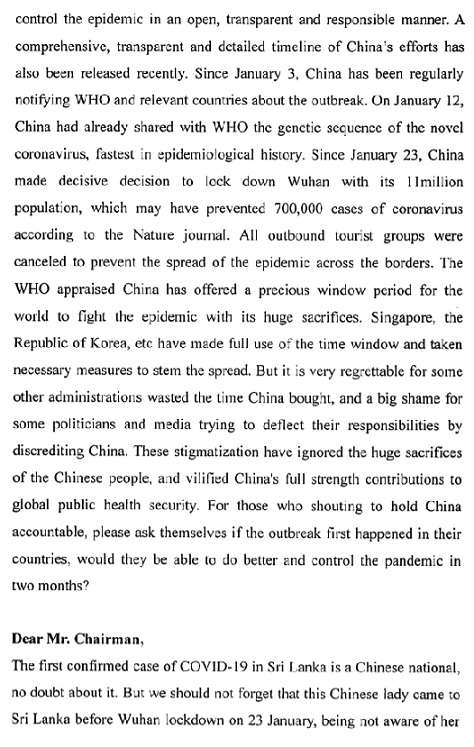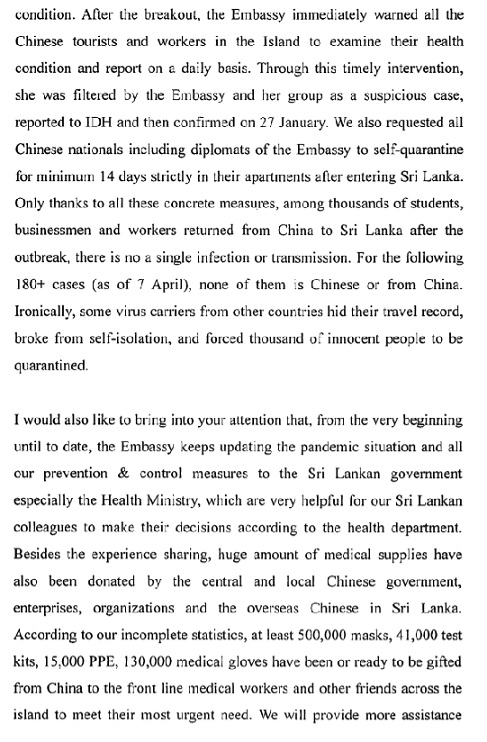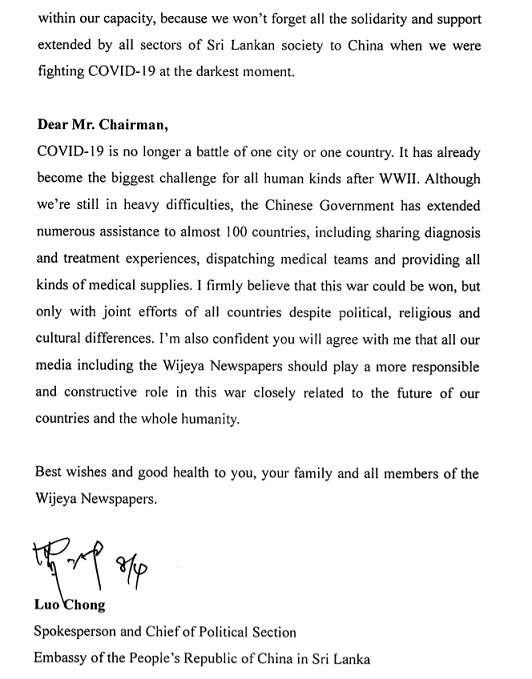Arundhati Roy: Courtesy Financial Times Life & Arts
The
novelist on how coronavirus threatens India — and what the country, and the
world, should do next
Who can use the term gone viral” now without shuddering a little? Who can look at anything any more — a door handle, a cardboard carton, a bag of vegetables — without imagining it swarming with those unseeable, undead, unliving blobs dotted with suction pads waiting to fasten themselves on to our lungs?
Who can think of
kissing a stranger, jumping on to a bus or sending their child to school
without feeling real fear? Who can think of ordinary pleasure and not assess
its risk? Who among us is not a quack epidemiologist, virologist, statistician
and prophet? Which scientist or doctor is not secretly praying for a miracle?
Which priest is not — secretly, at least — submitting to science?
And even while
the virus proliferates, who could not be thrilled by the swell of birdsong in
cities, peacocks dancing at traffic crossings and the silence in the
skies?
The number of
cases worldwide this week crept over a million. More than 50,000 people have
died already. Projections suggest that number will swell to hundreds of
thousands, perhaps more. The virus has moved freely along the pathways of trade
and international capital, and the terrible illness it has brought in its wake
has locked humans down in their countries, their cities and their homes. But
unlike the flow of capital, this virus seeks proliferation, not profit, and
has, therefore, inadvertently, to some extent, reversed the direction of the
flow. It has mocked immigration controls, biometrics, digital surveillance and
every other kind of data analytics, and struck hardest — thus far — in the
richest, most powerful nations of the world, bringing the engine of capitalism
to a juddering halt. Temporarily perhaps, but at least long enough for us to
examine its parts, make an assessment and decide whether we want to help fix
it, or look for a better engine.
The mandarins
who are managing this pandemic are fond of speaking of war. They don’t even use
war as a metaphor, they use it literally. But if it really were a war, then who
would be better prepared than the US? If it were not masks and gloves that its
frontline soldiers needed, but guns, smart bombs, bunker busters, submarines,
fighter jets and nuclear bombs, would there be a shortage?
Night after night,
from halfway across the world, some of us watch the New York governor’s press
briefings with a fascination that is hard to explain. We follow the statistics,
and hear the stories of overwhelmed hospitals in the US, of underpaid,
overworked nurses having to make masks out of garbage bin liners and old
raincoats, risking everything to bring succour to the sick. About states being
forced to bid against each other for ventilators, about doctors’ dilemmas over
which patient should get one and which left to die. And we think to ourselves,
My God! This is America!”
The tragedy is
immediate, real, epic and unfolding before our eyes. But it isn’t new. It is
the wreckage of a train that has been careening down the track for years. Who
doesn’t remember the videos of patient dumping” — sick people, still in their
hospital gowns, butt naked, being surreptitiously dumped on street corners?
Hospital doors have too often been closed to the less fortunate citizens of the
US. It hasn’t mattered how sick they’ve been, or how much they’ve suffered.
At least not
until now — because now, in the era of the virus, a poor person’s sickness can
affect a wealthy society’s health. And yet, even now, Bernie Sanders, the
senator who has relentlessly campaigned for healthcare for all, is considered
an outlier in his bid for the White House, even by his own party.
The tragedy
is the wreckage of a train that has been careening down the track for
years
And what of my
country, my poor-rich country, India, suspended somewhere between feudalism and
religious fundamentalism, caste and capitalism, ruled by far-right Hindu
nationalists?
In December,
while China was fighting the outbreak of the virus in Wuhan, the government of
India was dealing with a mass uprising by hundreds of thousands of its citizens
protesting against the brazenly discriminatory anti-Muslim citizenship law it
had just passed in parliament.
The first case
of Covid-19 was reported in India on January 30, only days after the honourable
chief guest of our Republic Day Parade, Amazon forest-eater and Covid-denier
Jair Bolsonaro, had left Delhi. But there was too much to do in February for
the virus to be accommodated in the ruling party’s timetable. There was the
official visit of President Donald Trump scheduled for the last week of the
month. He had been lured by the promise of an audience of 1m people in a sports
stadium in the state of Gujarat. All that took money, and a great deal of
time.
Then there were
the Delhi Assembly elections that the Bharatiya Janata Party was slated to lose
unless it upped its game, which it did, unleashing a vicious, no-holds-barred
Hindu nationalist campaign, replete with threats of physical violence and the
shooting of traitors”.
It lost anyway.
So then there was punishment to be meted out to Delhi’s Muslims, who were
blamed for the humiliation. Armed mobs of Hindu vigilantes, backed by the
police, attacked Muslims in the working-class neighbourhoods of north-east
Delhi. Houses, shops, mosques and schools were burnt. Muslims who had been
expecting the attack fought back. More than 50 people, Muslims and some Hindus,
were killed.
Thousands moved
into refugee camps in local graveyards. Mutilated bodies were still being
pulled out of the network of filthy, stinking drains when government officials
had their first meeting about Covid-19 and most Indians first began to hear
about the existence of something called hand sanitiser.
March was busy too.
The first two weeks were devoted to toppling the Congress government in the
central Indian state of Madhya Pradesh and installing a BJP government in its
place. On March 11 the World Health Organization declared that Covid-19 was a
pandemic. Two days later, on March 13, the health ministry said that corona is
not a health emergency”.
Finally, on
March 19, the Indian prime minister addressed the nation. He hadn’t done much
homework. He borrowed the playbook from France and Italy. He told us of the
need for social distancing” (easy to understand for a society so steeped in
the practice of caste) and called for a day of people’s curfew” on March 22.
He said nothing about what his government was going to do in the crisis, but he
asked people to come out on their balconies, and ring bells and bang their pots
and pans to salute health workers.
He didn’t
mention that, until that very moment, India had been exporting protective gear
and respiratory equipment, instead of keeping it for Indian health workers and
hospitals.
Not
surprisingly, Narendra Modi’s request was met with great enthusiasm. There were
pot-banging marches, community dances and processions. Not much social
distancing. In the days that followed, men jumped into barrels of sacred cow
dung, and BJP supporters threw cow-urine drinking parties. Not to be outdone,
many Muslim organisations declared that the Almighty was the answer to the
virus and called for the faithful to gather in mosques in numbers.
On March 24, at
8pm, Modi appeared on TV again to announce that, from midnight onwards, all of
India would be under lockdown. Markets would be closed. All transport, public
as well as private, would be disallowed.
He said he was
taking this decision not just as a prime minister, but as our family elder. Who
else can decide, without consulting the state governments that would have to
deal with the fallout of this decision, that a nation of 1.38bn people should
be locked down with zero preparation and with four hours’ notice? His methods definitely
give the impression that India’s prime minister thinks of citizens as a hostile
force that needs to be ambushed, taken by surprise, but never trusted.
Locked down we
were. Many health professionals and epidemiologists have applauded this move. Perhaps
they are right in theory. But surely none of them can support the calamitous
lack of planning or preparedness that turned the world’s biggest, most punitive
lockdown into the exact opposite of what it was meant to achieve.
The man who
loves spectacles created the mother of all spectacles.
As an appalled
world watched, India revealed herself in all her shame — her brutal,
structural, social and economic inequality, her callous indifference to
suffering.
The lockdown
worked like a chemical experiment that suddenly illuminated hidden things. As
shops, restaurants, factories and the construction industry shut down, as the
wealthy and the middle classes enclosed themselves in gated colonies, our towns
and megacities began to extrude their working-class citizens — their migrant
workers — like so much unwanted accrual.
Many driven out
by their employers and landlords, millions of impoverished, hungry, thirsty
people, young and old, men, women, children, sick people, blind people,
disabled people, with nowhere else to go, with no public transport in sight,
began a long march home to their villages. They walked for days, towards
Badaun, Agra, Azamgarh, Aligarh, Lucknow, Gorakhpur — hundreds of kilometres
away. Some died on the way.
Our towns and
megacities began to extrude their working-class citizens like so much unwanted
accrual
They knew they were going home potentially to slow
starvation. Perhaps they even knew they could be carrying the virus with them,
and would infect their families, their parents and grandparents back home, but
they desperately needed a shred of familiarity, shelter and dignity, as well as
food, if not love.
As they walked,
some were beaten brutally and humiliated by the police, who were charged with
strictly enforcing the curfew. Young men were made to crouch and frog jump down
the highway. Outside the town of Bareilly, one group was herded together and
hosed down with chemical spray.
A few days
later, worried that the fleeing population would spread the virus to villages,
the government sealed state borders even for walkers. People who had been
walking for days were stopped and forced to return to camps in the cities they
had just been forced to leave.
Among older
people it evoked memories of the population transfer of 1947, when India was
divided and Pakistan was born. Except that this current exodus was driven by
class divisions, not religion. Even still, these were not India’s poorest
people. These were people who had (at least until now) work in the city and
homes to return to. The jobless, the homeless and the despairing remained where
they were, in the cities as well as the countryside, where deep distress was
growing long before this tragedy occurred. All through these horrible days, the
home affairs minister Amit Shah remained absent from public view.
When the walking
began in Delhi, I used a press pass from a magazine I frequently write for to
drive to Ghazipur, on the border between Delhi and Uttar Pradesh.
The scene was
biblical. Or perhaps not. The Bible could not have known numbers such as these.
The lockdown to enforce physical distancing had resulted in the opposite —
physical compression on an unthinkable scale. This is true even within India’s
towns and cities. The main roads might be empty, but the poor are sealed into
cramped quarters in slums and shanties.
Every one of the
walking people I spoke to was worried about the virus. But it was less real,
less present in their lives than looming unemployment, starvation and the
violence of the police. Of all the people I spoke to that day, including a
group of Muslim tailors who had only weeks ago survived the anti-Muslim
attacks, one man’s words especially troubled me. He was a carpenter called
Ramjeet, who planned to walk all the way to Gorakhpur near the Nepal border.
Maybe when
Modiji decided to do this, nobody told him about us. Maybe he doesn’t know
about us”, he said.
Us” means
approximately 460m people.
State
governments in India (as in the US) have showed more heart and understanding in
the crisis. Trade unions, private citizens and other collectives are
distributing food and emergency rations. The central government has been slow
to respond to their desperate appeals for funds. It turns out that the prime
minister’s National Relief Fund has no ready cash available. Instead, money
from well-wishers is pouring into the somewhat mysterious new PM-CARES fund.
Pre-packaged meals with Modi’s face on them have begun to appear.
In addition to
this, the prime minister has shared his yoga nidra videos, in which a morphed,
animated Modi with a dream body demonstrates yoga asanas to help people deal
with the stress of self-isolation.
The narcissism
is deeply troubling. Perhaps one of the asanas could be a request-asana in
which Modi requests the French prime minister to allow us to renege on the very
troublesome Rafale fighter jet deal and use that €7.8bn for desperately needed
emergency measures to support a few million hungry people. Surely the French
will understand.
As the lockdown
enters its second week, supply chains have broken, medicines and essential
supplies are running low. Thousands of truck drivers are still marooned on the
highways, with little food and water. Standing crops, ready to be harvested,
are slowly rotting.
The economic
crisis is here. The political crisis is ongoing. The mainstream media has
incorporated the Covid story into its 24/7 toxic anti-Muslim campaign. An
organisation called the Tablighi Jamaat, which held a meeting in Delhi before
the lockdown was announced, has turned out to be a super spreader”. That is
being used to stigmatise and demonise Muslims. The overall tone suggests that
Muslims invented the virus and have deliberately spread it as a form of
jihad.
The Covid crisis
is still to come. Or not. We don’t know. If and when it does, we can be sure it
will be dealt with, with all the prevailing prejudices of religion, caste and
class completely in place.
Today (April 2)
in India, there are almost 2,000 confirmed cases and 58 deaths. These are
surely unreliable numbers, based on woefully few tests. Expert opinion varies
wildly. Some predict millions of cases. Others think the toll will be far less.
We may never know the real contours of the crisis, even when it hits us. All we
know is that the run on hospitals has not yet begun.
India’s public
hospitals and clinics — which are unable to cope with the almost 1m children
who die of diarrhoea, malnutrition and other health issues every year, with the
hundreds of thousands of tuberculosis patients (a quarter of the world’s
cases), with a vast anaemic and malnourished population vulnerable to any
number of minor illnesses that prove fatal for them — will not be able to cope
with a crisis that is like what Europe and the US are dealing with now.
All healthcare
is more or less on hold as hospitals have been turned over to the service of
the virus. The trauma centre of the legendary All India Institute of Medical
Sciences in Delhi is closed, the hundreds of cancer patients known as cancer
refugees who live on the roads outside that huge hospital driven away like
cattle.
People will fall
sick and die at home. We may never know their stories. They may not even become
statistics. We can only hope that the studies that say the virus likes cold
weather are correct (though other researchers have cast doubt on this). Never
have a people longed so irrationally and so much for a burning, punishing
Indian summer.
What is this
thing that has happened to us? It’s a virus, yes. In and of itself it holds no
moral brief. But it is definitely more than a virus. Some believe it’s God’s
way of bringing us to our senses. Others that it’s a Chinese conspiracy to take
over the world.
Whatever it is,
coronavirus has made the mighty kneel and brought the world to a halt like
nothing else could. Our minds are still racing back and forth, longing for a
return to normality”, trying to stitch our future to our past and refusing to
acknowledge the rupture. But the rupture exists. And in the midst of this
terrible despair, it offers us a chance to rethink the doomsday machine we have
built for ourselves. Nothing could be worse than a return to normality.
Historically,
pandemics have forced humans to break with the past and imagine their world
anew. This one is no different. It is a portal, a gateway between one world and
the next.
We can choose to
walk through it, dragging the carcasses of our prejudice and hatred, our
avarice, our data banks and dead ideas, our dead rivers and smoky skies behind
us. Or we can walk through lightly, with little luggage, ready to imagine
another world. And ready to fight for it.
Arundhati Roy’s
latest novel is ‘The Ministry of Utmost Happiness’ Copyright © Arundhati Roy
2020

